LandScales
Short profile
Duration
Background
LandScales (Connecting processes and structures driving the landscape carbon dynamics over scales) integrated the aquatic and terrestrial perspectives of landscape carbon dynamics within a multidisciplinary collaborative research environment, by characterising structures, processes, and fluxes across scales. To meet this research two kettle holes were selected from the Uckermark region in Brandenburg, Northeastern Germany (Rittgarten: N 53°23'22” E 013°42'09”; and Kraatz: N 53°25'05” E13°39'48”) and were instrumented for long-term research. Both kettle holes are surrounded by an intensely managed agricultural landscape.
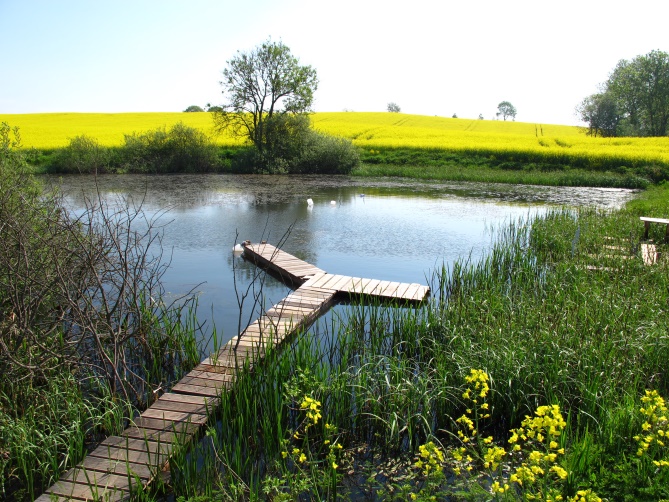
Structure of LandScales. The project was set up in a matrix structure and was subdivided in three core (WP1-3) and one overarching research topics (WP4). They comprised mechanisms (WP1), fluxes (WP2) and structures/erosion (WP3) of the landscape C dynamics and had both a terrestrial and aquatic focus. Each WP was part of the Research Platform (green circle) and the Methods & Infrastructural Platform (blue triangle). The three core WP were interlinked by the assessment of uncertainty in transferring process and fluxes across scales (inner red triangle; WP 4)
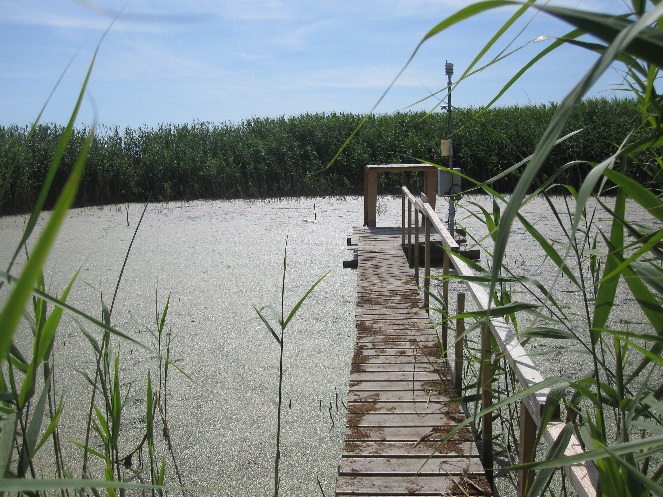
Goal
Due to its multidisciplinary LandScales had several goals to meet: Some studies aimed to assess the relative importance of differences in carbon (C) quantity and quality for microbial and biogeochemical processes or quantified the GPP in temperate nutrient-rich kettle holes with different typical vegetation types, for instance. Other tested if hydroperiod and land management were imprinted on the isotopic values (δ13C, δ15N) or used isoscapes to understand the complex land-use and management patterns of the agricultural landscapes.
Publications
- Attermeyer, K., H.-P. Grossart, S. Flury, K. Premke (2016) Bacterial processes and biogeochemical changes in the water body of kettle holes - mainly driven by autochthonous organic matter?. Aquatic Sciences (accepted).
- Kleeberg, A., M. Neyen, U.-K. Schkade, T. Kalettka & G. Lischeid (2016): Sediment cores from kettle holes in NE Germany reveal recent impacts of agriculture. Environmental Science and Pollution Research 23(8): 7409-7424. DOI 10.1007/s11356-015-5989-y
- Kleeberg, A., M. Neyen & T. Kalettka (2016): Element-specific downward fluxes impact the metabolism and vegetation of kettle holes. Hydrobiologia 766: 261-274. DOI 10.1007/s10750-015-2460-5
- Attermeyer, K., S. Flury, R. Jayakumar, P. Fiener, K. Steger, V. Arya, F. Wilken, R. van Geldern, K. Premke (2015) Invasive floating macrophytes reduce greenhouse gas emissions from a small tropical lake. Scientific Reports 6: 20424.
- Premke, K., K. Attermeyer, J. Augustin, A. Cabezas, P. Casper, et al. (2015) The importance of landscape complexity for carbon fluxes on the landscape level: Small scale heterogeneity matters. WIREs Water 3: 601-617.
- Kalinkat, G., Cabral, J. S., Darwall, W., Ficetola, G. F., Fisher, J. L., Giling, D. P., Gosselin, M.-P., Grossart, H.-P., Jähnig, S. C., Jeschke, J. M., Knopf, K., Larsen, S., Onandia, G., Pätzig, M., Saul, W.-C., Singer, G., Sperfeld, E., Jarić, I. (2016): Flagship umbrella species needed for the conservation of overlooked aquatic biodiversity. Conservation Biology (online)
- Kleeberg, A., Neyen, M., Kalettka, T. (2016a): Element-specific downward fluxes impact the metabolism and vegetation of kettle holes. Hydrobiologia 766, 1, 261-274
- Kleeberg, A., Neyen, M., Schkade, U.-K., Kalettka, T., Lischeid, G. (2016b): Sediment cores from kettle holes in NE Germany reveal recent impacts of agriculture. Environmental Science and Pollution Research 23, 8, 7409-7424
- Lischeid, G., Kalettka, T., Merz, C., Steidl, J. (2016): Monitoring the phase space of ecosystems: concept and examples from the Quillow catchment, Uckermark. Ecological Indicators 65, 55-65
- Lischeid, G., Balla, D., Dannowski, R., Dietrich, O., Kalettka, T., Merz, C., Schindler, U., Steidl, J. (2017): Forensic hydrology: What function tells about structure in complex settings. Environmental Earth Sciences (in press), DOI: 10.1007/s12665-016-6351-5
- Nitzsche, K., Kalettka, T., Premke, K., Lischeid, G., Geßler, A., Kayler, Z. (2017): Land-use and hydroperiod affect kettle hole sediment carbon and nitrogen biogeochemistry. Science of the Total Environment 574, 46-56
- Onandia, G., Dias, J. D., Miracle, M. R. (2015): Zooplankton grazing on natural algae and bacteria under hypertrophic conditions. Limnetica 34, 2, 541-560
- Premke, K., Attermeyer, K., Augustin, J., Cabezas, A., Casper, P., Deumlich, D., Gelbrecht, J., Gerke, H. H., Geßler, A., Grossart, H.-P., Hilt, S., Hupfer, M., Kalettka, T., Kayler, Z., Lischeid, G., Sommer, M., Zak, D. (2016): The importance of landscape diversity for carbon fluxes at the landscape level: small-scale heterogeneity matters. Wiley Interdisciplinary Reviews: Water 3, 4, 601-617
- Reverey, F., Grossart, H.-P., Premke, K., Lischeid, G. (2016): Carbon and nutrient cycling in kettle hole sediments depending on hydrological dynamics: a review. Hydrobiologia 775, 1, 1-20
- Onandia, G., Dias, J. D., Miracle, M. R. (2015): Zooplankton grazing on natural algae and bacteria under hypertrophic conditions. Limnetica 34, 2, 541-560.
- Kalinkat, G., Cabral, J. S., Darwall, W., Ficetola, G. F., Fisher, J. L., Giling, D. P., Gosselin, M.-P., Grossart, H.-P., Jähnig, S. C., Jeschke, J. M., Knopf, K., Larsen, S., Onandia, G., Pätzig, M., Saul, W.-C., Singer, G., Sperfeld, E., Jarić, I. (2016): Flagship umbrella species needed for the conservation of overlooked aquatic biodiversity. Conservation Biology (online). DOI: 10.1111/cobi.12813
- K. Attermeyer, H.-P. Grossart, S. Flury, K. Premke. Pelagic bacterial processes and biogeochemical changes in kettle holes - mainly driven by autochthonous production? Aquatic Sciences – accepted.
- D. F. McGinnis, N. Bisley, M. Schmidt, P. Fietzek, P. Bodmer, K. Premke, A. Lorke, S. Flury. 2016. Deconstructing methane emissions from a small Northern European river: hydrodynamics and temperature as key drivers. Environmental Science and Technology; DOI: 10.1021/acs.est.6b03268.
- K. Attermeyer, S. Flury, R. Jayakumar, P. Fiener, K. Steger, V. Arya, F. Wilken, R. van Geldern, K. Premke. 2016. Invasive floating macrophytes reduce greenhouse gas emissions from a small tropical lake. Scientific Reports, 6, 20424; DOI: 10.1038/srep20424.
- A. Lorke, P. Bodmer, C. Noss, Z. Alshboul, M. Koschorreck, C. Somlai, D. Bastviken, S. Flury, D. F. McGinnis, A. Maeck, D. Müller, K. Premke. 2015. Technical Note: Drifting vs. Anchored flux chambers for measuring greenhouse gas emissions from running waters. Biogeosciences Discussions, 12, 14619-14645.
- S. Flury, R.N. Glud, K. Premke, D.F. McGinnis. 2015. The effect of sediment gas voids and ebullition on benthic solute exchange. Environmental Science and Technology; DOI: 10.1021/acs.est.5b01967.
- D. F. McGinnis, G. Kirillin, K. W. Tang, S. Flury, P. Bodmer, C. Engelhardt, P. Casper, and H.-P. Grossart. 2015. Enhancing surface methane fluxes from an oligotrophic lake: Exploring the microbubble hypothesis. Environmental Science and Technology, 49(2).
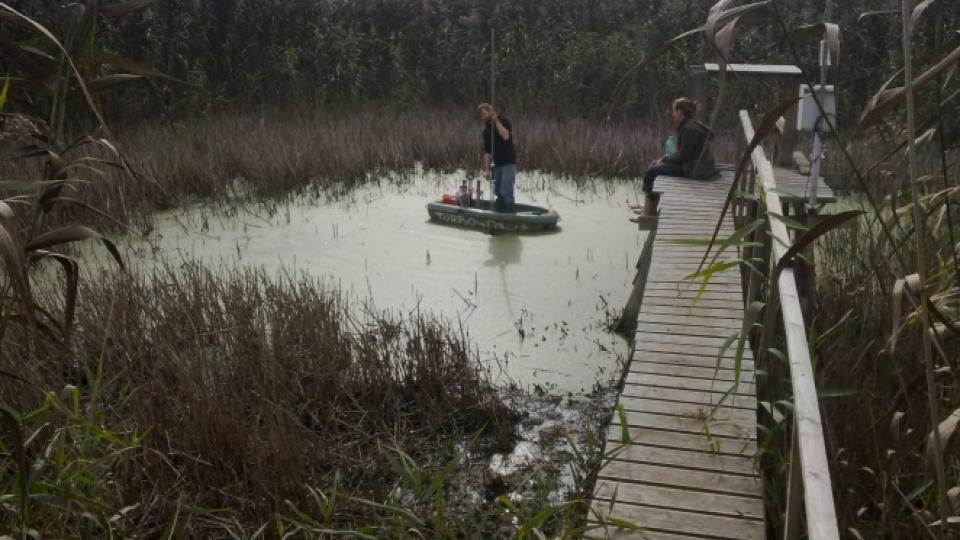
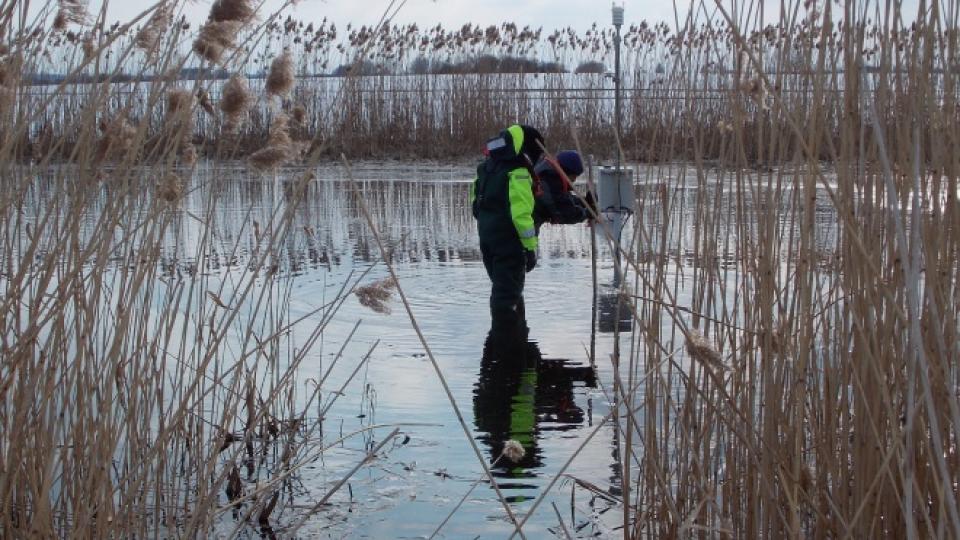

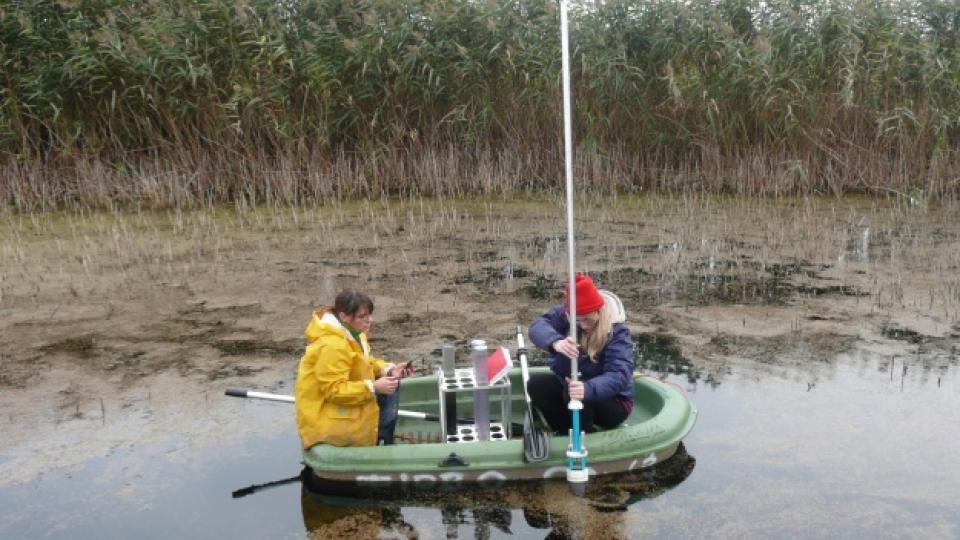
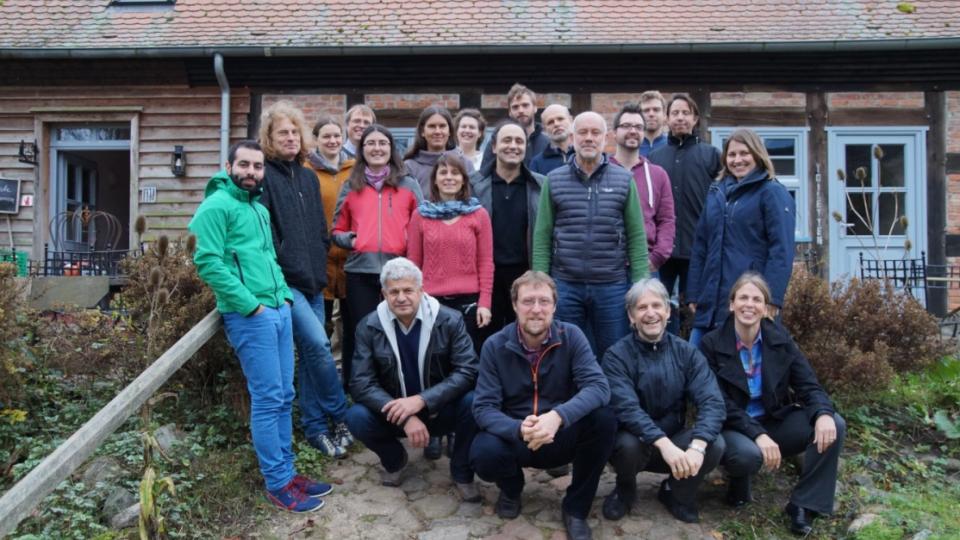
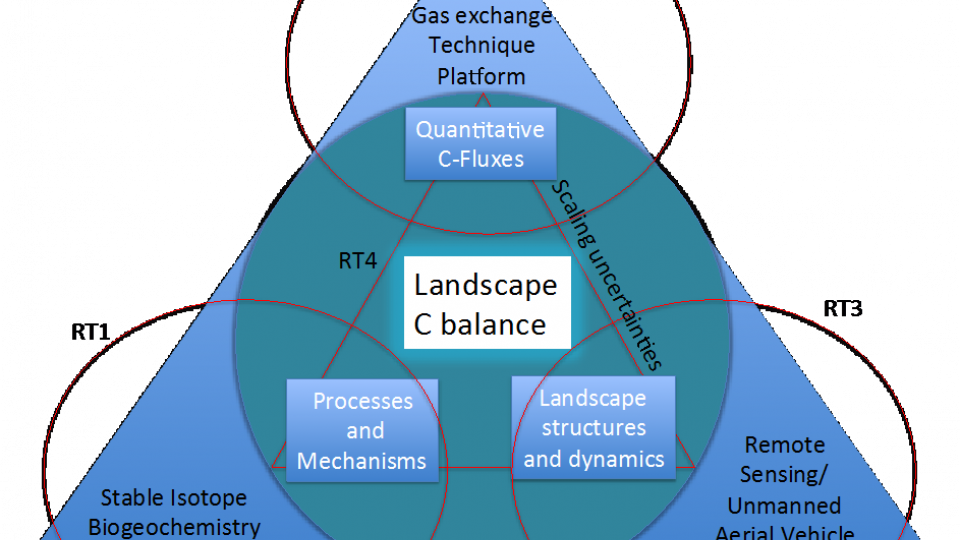
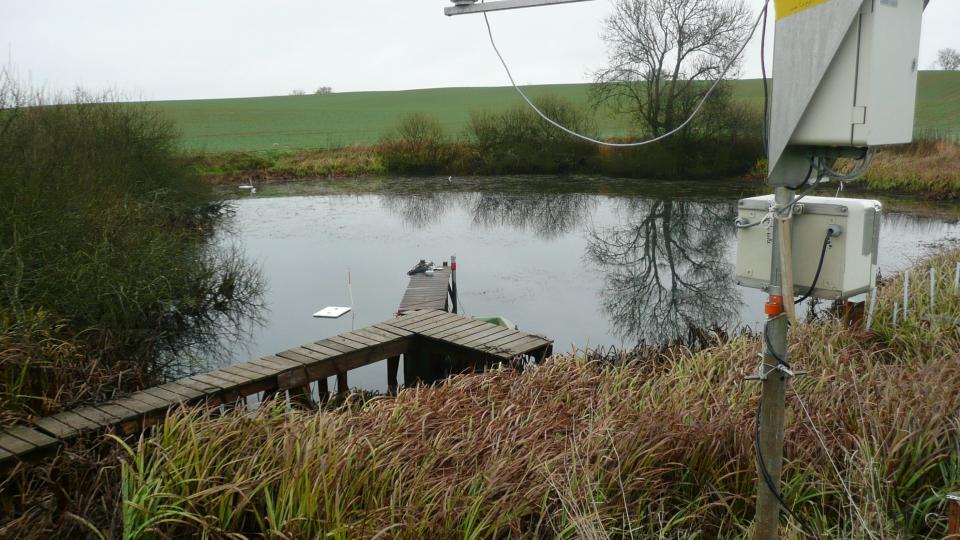
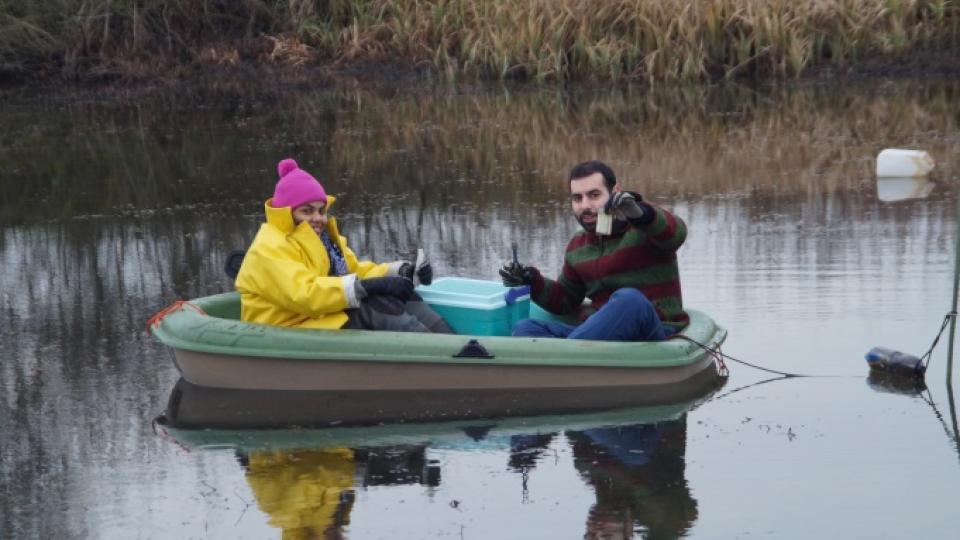
Pact for Innovation and Research of the Gottfried Wilhelm Leibniz association



